 View Winners →
View Winners → Taking in the Rarefied Atmosphere of Oxford

Christ Church College. – Courtesy photo
By May S. Ruiz
Oxford, England, located in Oxfordshire (51 miles north of London), is best known for its university – the oldest in the English-speaking world and, quite possibly, the most esteemed institution of higher learning on earth. There was some form of teaching there as far back as 1096. Unlike at other university towns, the University of Oxford was there before the area was settled in, so the town was built around the school.
The first time I went to Oxford, 29 years ago, it was during the spring and it seemed like the quintessential college town. This time around, however, the atmosphere was as widely different as night and day.
My two young companions and I arrived in Oxford around 2:45 in the afternoon, having left Cambridge on the 13:30 train from London Kings Cross. Immediately, as we alighted, we felt the contrast between the two cities. Whereas Cambridge was calm even with tourists visiting for a few days and kith and kin descending into town for graduation week, Oxford buzzed with incessant activity and teemed with humanity jostling for space. Dozens of tourist vehicles, double-decker buses, taxis, and cars of all models and makes greeted us when we got out of the station. There were people milling every which way and vendors selling all sorts of souvenir items. It was a veritable circus.
It was also an uncommonly hot summer day for England where it’s usually cold and grey. We happened to be traveling there in one of their rare heatwaves. Thankfully, we were already in Oxford when Cambridge registered a temperature of 38.7C (101.7F), the highest ever-recorded in the U.K. (it beat the previous UK record of 38.5C set in Kent in 2003). But it wasn’t that less hot in Oxford either – it was 37C (98.6F).
But the situation only became worse when we got to the Van Brugh, a boutique hotel which was formerly a residence, and we found out it had no air conditioning (a fact they did not disclose on their website)! The building was ill-equipped for the soaring temperatures and the staff was woefully unprepared to allay the situation. The rooms were 32.7C (90.86F) at night and, for security reasons, the windows wouldn’t open more than a few inches. The electric fans and buckets of ice the staff provided didn’t do much to ease our discomfort.
We stayed outdoors sightseeing for as long as possible but there was no escaping the heat. We walked around town with the big umbrellas the hotel kept in every room, for the downpours that are normally expected, and we used them to shield us from the sun. We must have looked ludicrous. However, we saw several Asian tourists who had the same idea – it was like being back home in the San Gabriel Valley. In fact, it seemed like all the tourists were Asians!
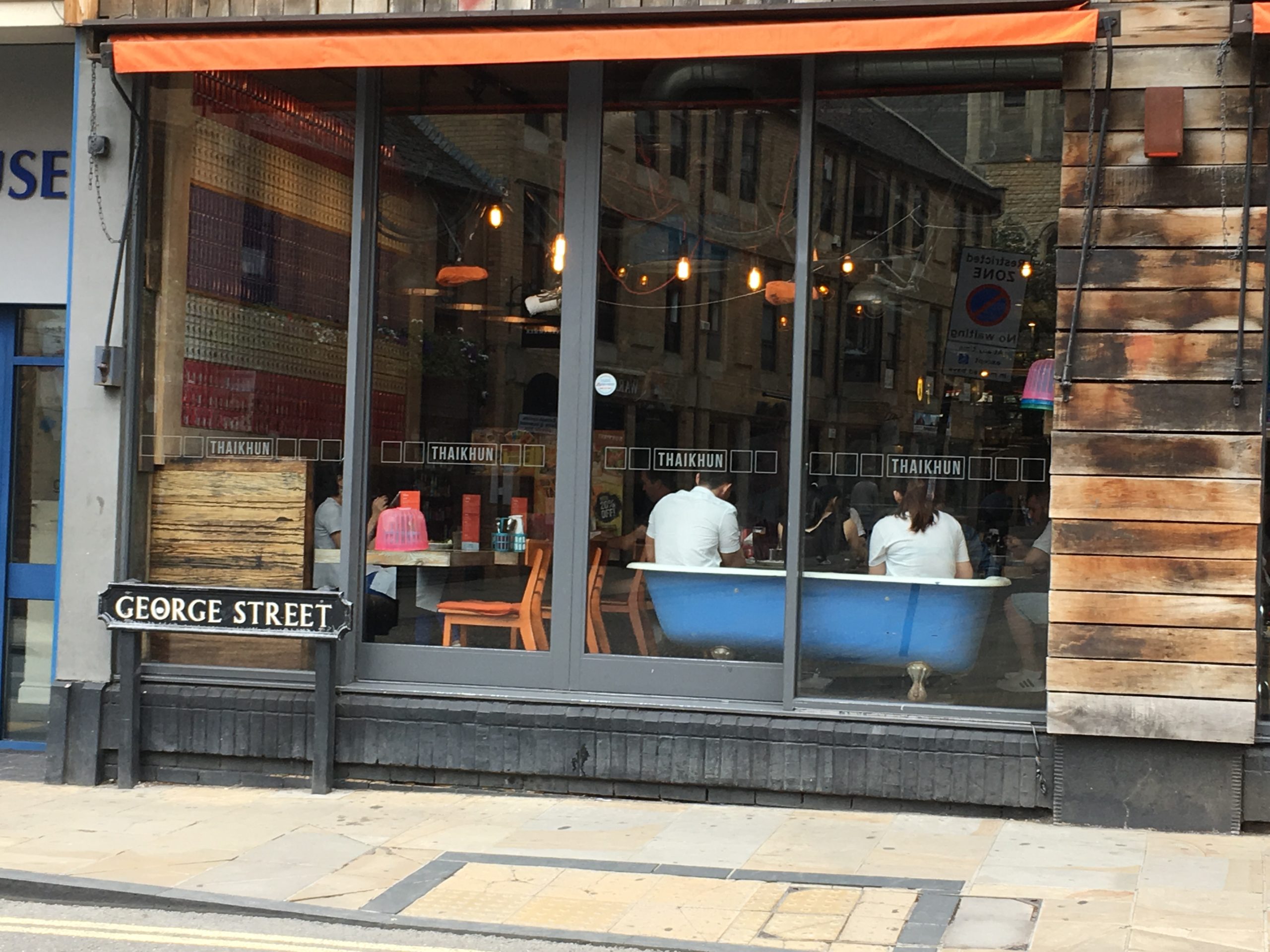
This Thai restaurant on George Street has a bathtub for seating. – Photo by May S. Ruiz / Beacon Media News
Happily, Van Brugh is located on St Michaels Street, off of George Street, and is central to all the places we wanted to go. We spent that first day meandering and decided to get an early dinner at Cote Brasserie on George Street as we made our way back to the hotel.
Oxford is a very popular tourist destination, with themed ‘Official Walking Tours’ to fit everyone’s interest. There’s the two-hour tour of the university’s most iconic buildings. Fans of the British detective series ‘Inspector Morse Lewis’ and ‘Endeavour’ can take a two-hour tour of the various locations used in the show. And then there are the ‘Official Harry Potter Highlights Tour of Oxford’ and the ‘Harry Potter and Alice in Wonderland Official Oxford Tour.’
Opting not to join any official tour, we set out on our own to see the various sights. Our first stop was Christ Church Cathedral and College – paradoxically the largest of Oxford colleges combined with the smallest cathedral in England. While Christ Church isn’t the oldest college (that claim belongs to University College), it is, arguably, the most prestigious.

Christ Church Cathedral and College. – Photo by May S. Ruiz / Beacon Media News
Christ Church Cathedral’s and College’s architecture, population, and way of life have been a source of inspiration for many authors and filmmakers. Lewis Carroll studied, taught, and lived at Christ Church for 47 years and his ‘Alice’ was Alice Liddell, the daughter of the Dean at that time. In the Dining Hall, on the left-hand wall, the fifth window from the entrance bears portraits of Alice and creatures from ‘Alice in Wonderland.’
The Quad, Cloister, and Hall Staircase have been used in several films. Harry Potter fans will recognize the tops of the Hall Staircase where Professor McGonagall welcomes Harry, Hermione, Ron, and their classmates to Hogwarts. The Cloister is where Harry is shown the Quidditch trophy his dad won when he was a seeker. The Great Hall was replicated in a studio to become Hogwarts Hall.
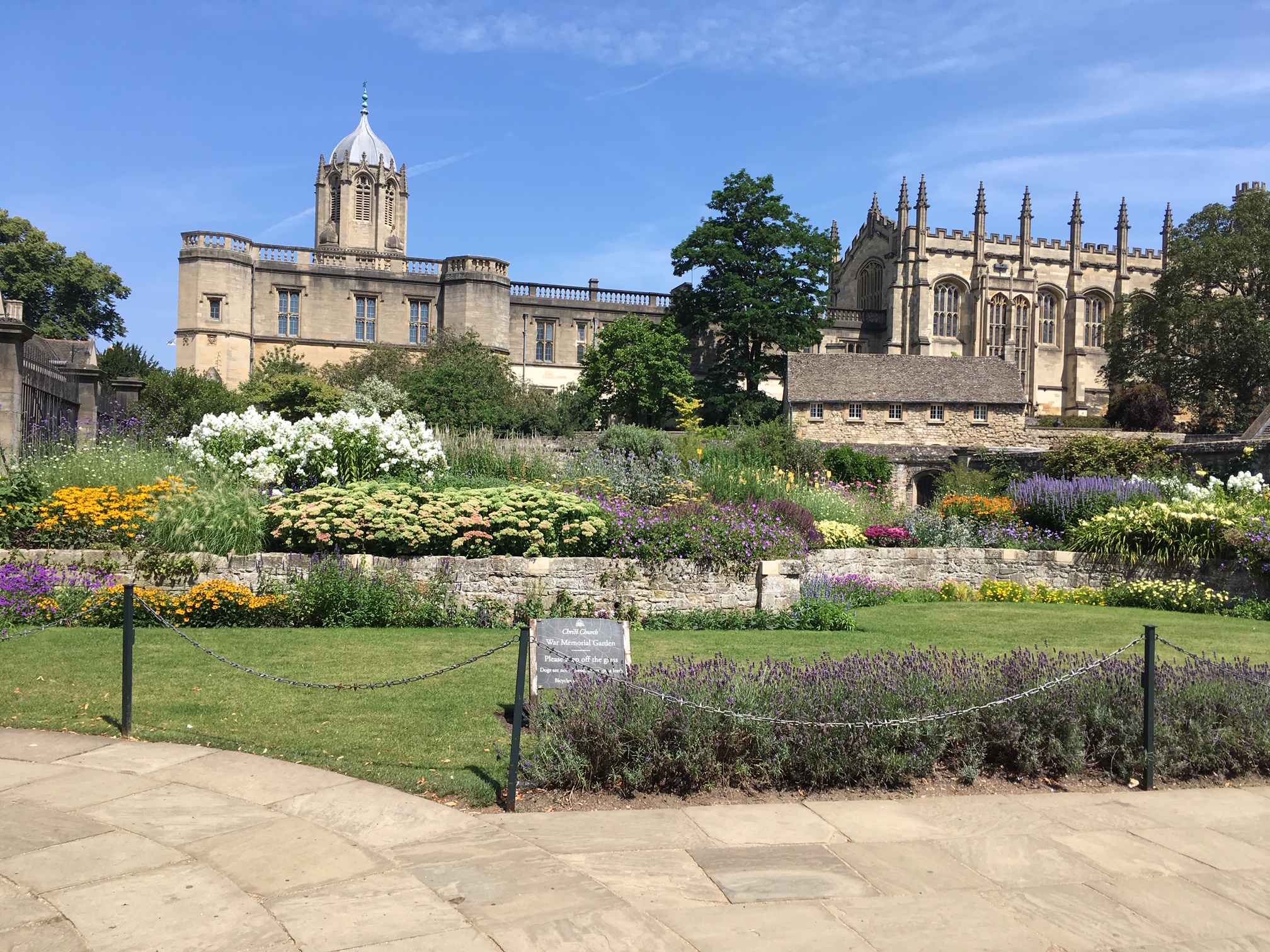
Christ Church Meadow Entrance. – Photo by May S. Ruiz / Beacon Media News
We entered Christ Church through the Meadow and the Meadow Building bordered by the rivers Cherwell and Thames. The limestone path was lined with glorious blooms and made for an extremely pleasant walk, even on this hot and humid day.
The cathedral, which was originally the church of St Frideswide’s Priory, the patron saint of Oxford, was built in 1120. In 1522, Thomas Cardinal Wolsey selected the priory as the site for his proposed college and founded the cathedral as the college chapel (a dual role that’s unique in the Church of England). The choir has been there since 1526 when John Taverner was the organist and master of choristers. It was refounded in 1546 by Henry VIII when he established the College.
According to the Christ Church Information booklet, much of this ancient priory church was rebuilt between 1170 and 1190. The Cathedral used to extend towards the space where Tom Quad now stands but Cardinal Wolsey knocked down three bays of the name to accommodate the College.
The Jonah Window (made in 1630 by Abraham van Linge) is remarkable in that only the figure of Jonah is made of stained glass – the rest consists of small panels of painted glass, showing the city of Nineveh in minute detail. In the North Transept, the St Michael Window (created by Clayton & Bell in 1870) is the Cathedral’s largest. It contains Victorian glass that shows the Archangel Michael leading his army of angels to defeat the devil, who is depicted as a dragon beneath St Michael’s feet. The window also illustrates a scene from Revelation, the final book in the Bible.
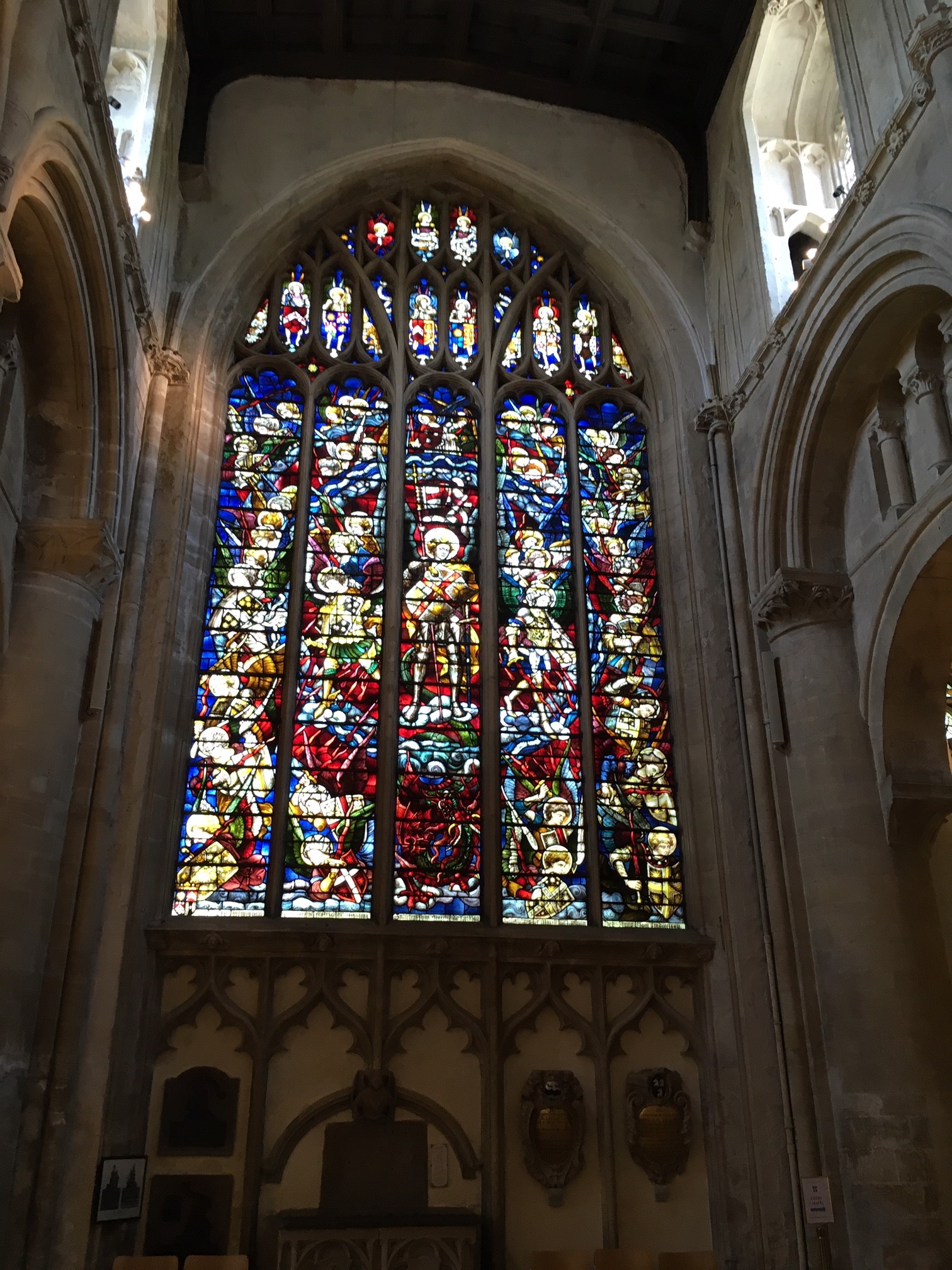
St Michael Window. – Photo by May S. Ruiz / Beacon Media News
What is believed to be either The Watching Loft or a Chantry Chapel, dating from the 1500s, is an exquisite example of medieval woodwork. Not far from the shrine is the Bell Chapel. It has an altar and a free-standing cross carved from its base made in memory of Bishop George Bell who, in 1942, opposed the bombing of German cities. Near the High Altar is the Bishop’s seat, indicating that this is the mother church of the Oxford Diocese.
The Cathedral’s vaulted ceiling is its chief architectural glory. Its striking ribs splay out from 12 stone lanterns which appear to hang miraculously in mid-air. Small interconnecting ‘lierne’ ribs in the center of the vault create eight-pointed stars, forming an image of heaven.
Located in the northeast corner is the Latin Chapel where the shrine of St Frideswide is found. The oldest monument in the Cathedral, it once held the relics of the saint but was smashed when King Henry commanded in 1538 that all monasteries be destroyed. He was then reburied nearby. The fragments of his shrine were discovered down a well and subsequently pieced together over 350 years later.
In the South Transept can be found the medieval Becket Window, the oldest in the Cathedral. It contains a rare panel illustrating the martyrdom of Archbishop Thomas Becket, who died at Canterbury Cathedral in 1170. He is shown kneeling between a monk and the four knights who murdered him. The panel was defaced in the 16th century in order to protect it from Henry VIII’s orders to destroy all images of Thomas Becket; the original face of Becket is now missing.
The Cloister, like the Cathedral, is part of the original Priory of St Frideswide, which stood here before the college was built. Human remains from the time of St Frideswide (8th century AD) were found in the central plot. The olive tree, a traditional symbol of peace, and the fountain are contemporary additions to the Cloister and mark the threshold of the Cathedral’s sacred space.
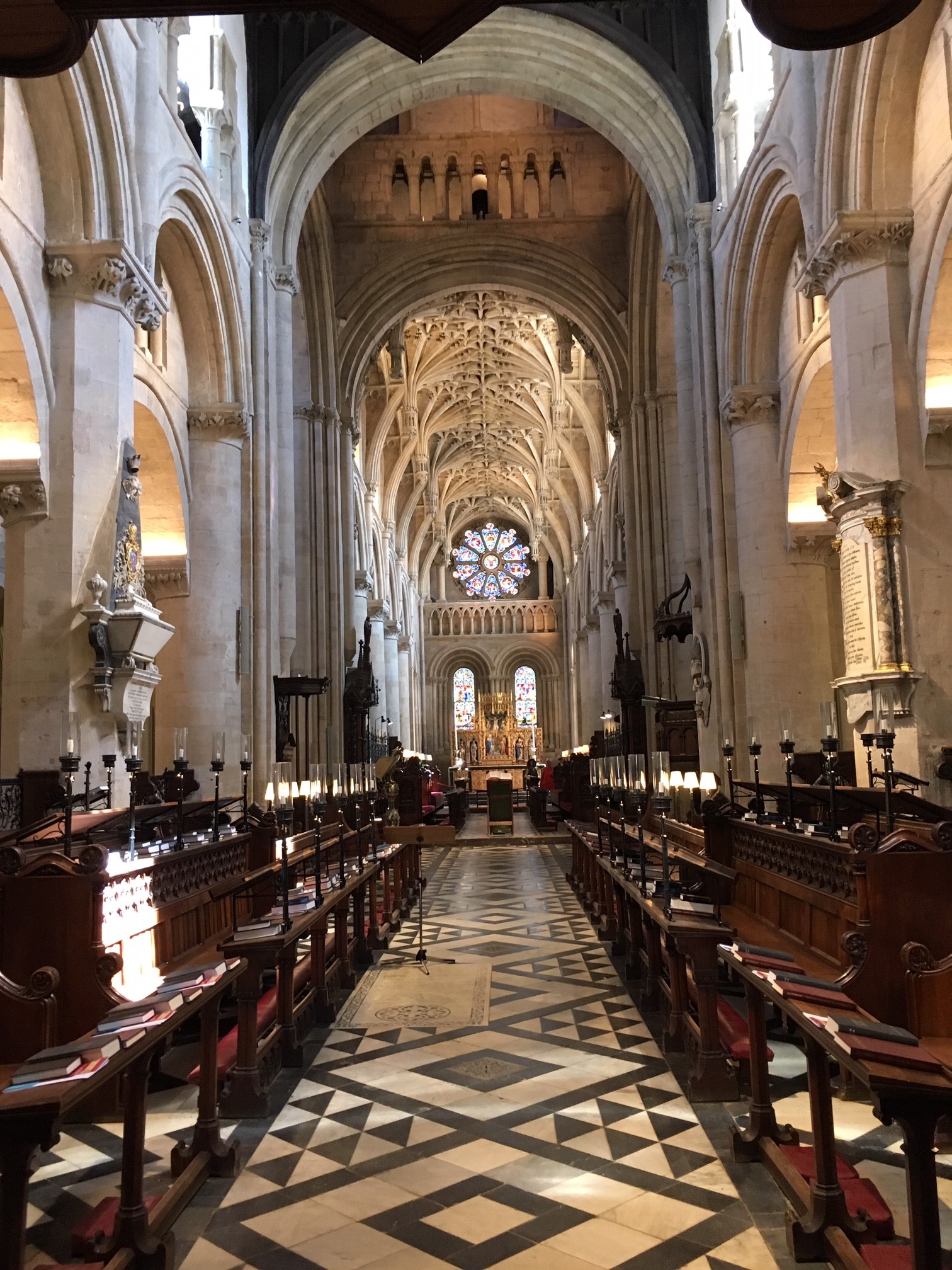
Christ Church Cathedral. – Photo by May S. Ruiz / Beacon Media News
We were sitting in the Cathedral for the 12:00 Prayer when the priest asked everyone present to pray for the poor who are suffering from hunger, for refugees who are looking for safe haven, and for those being persecuted for their religious beliefs. And, lastly, he asked that we pray for Boris Johnson, who had just been elected as the new Prime Minister, so that he may find guidance to do what’s right for the U.K. An Oxonian himself (he attended Balliol College, one of the oldest colleges), Johnson was voted President of the Oxford Union in 1986.
How apt that we should be at this very Cathedral, on the 23rd of July, when my daughter’s English husband (who was her fiancé then) found out that the U.K. may indeed be in dire need of the world’s prayers. That he was soon to be wed and immigrating to the U.S. didn’t come as too great a comfort since his entire family lives in England.
From the Cathedral, we went to Christ Church College, which students endearingly refer to as ‘the house’ because it’s their home when they’re in Oxford – it’s where they live, eat, and study. It has several architecturally significant structures, including Tom Tower designed by Sir Christopher Wren, England’s most renowned architect. It is reputed to be the second wealthiest college after St John’s. It counts William Penn (the founder of Pennsylvania), C.L. Dodgson (whom we know as Lewis Carroll), Edward VII (when he was Prince of Wales), and 14 Prime Ministers, among its illustrious alumni.
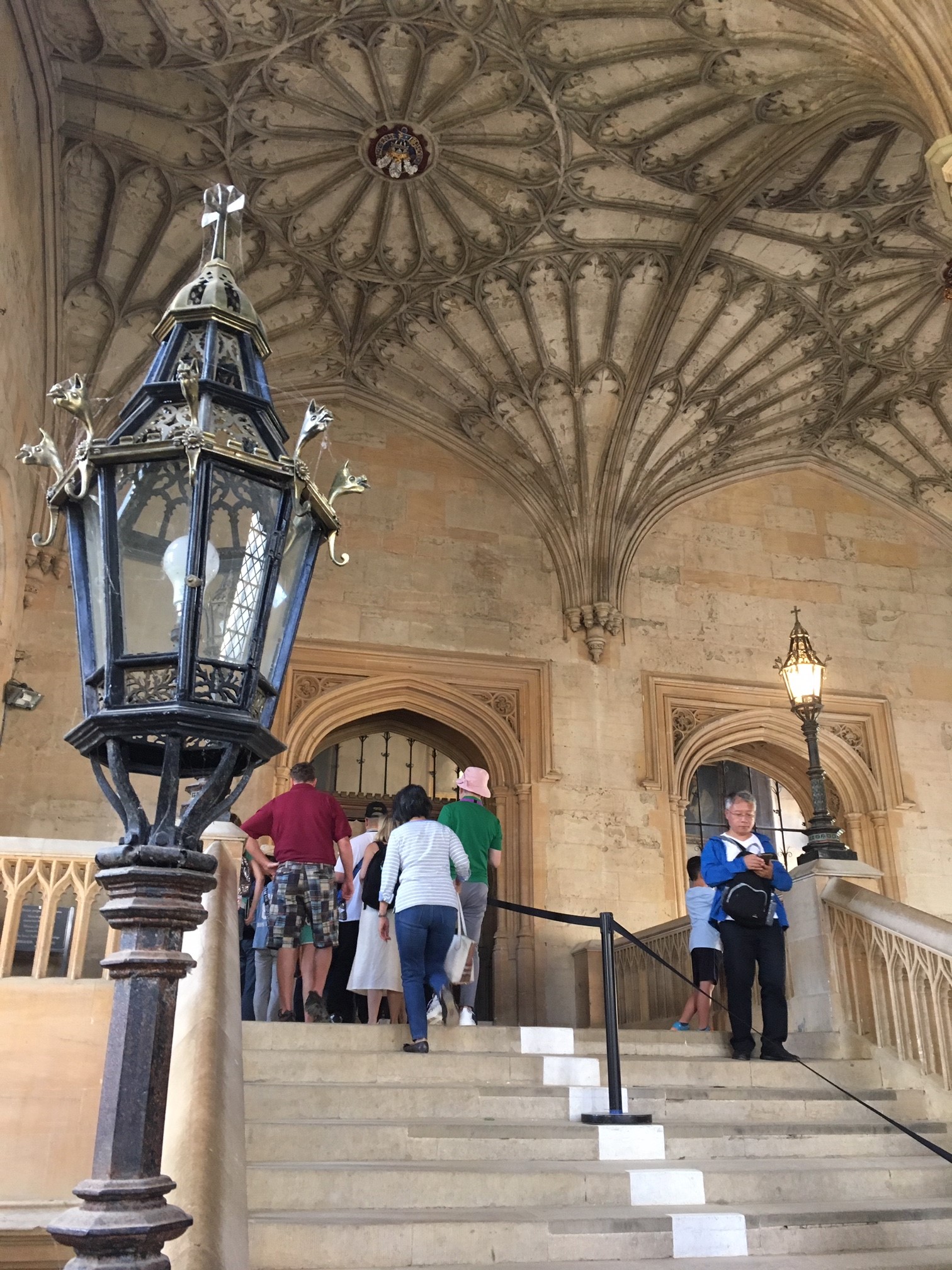
The Great Staircase. – Photo by Brianna Chu / Beacon Media News
We climbed the Great Staircase channeling Harry Potter and company even as we were cognizant of its greater significance. A door at the bottom of the staircase has the words ‘No Peel’ studded into it – a protest against the Home Secretary, Sir Robert Peel, who in 1829 proposed greater freedom for Catholics. Ironically, Peel was a Christ Church alumnus.
The Great Staircase leads into the Great Hall, the center of college life. It is where the academic community congregates to dine every day and where banquets are held on special occasions. Breakfast, lunch (brunch during weekends), and dinner are eaten there so the hall is closed during those times. We were there right after it reopened after lunch and there were still trays, carts, and signage for beverage choices – traces of the meal which had been recently served – which seemed quite mundane in the backdrop of this resplendent space.
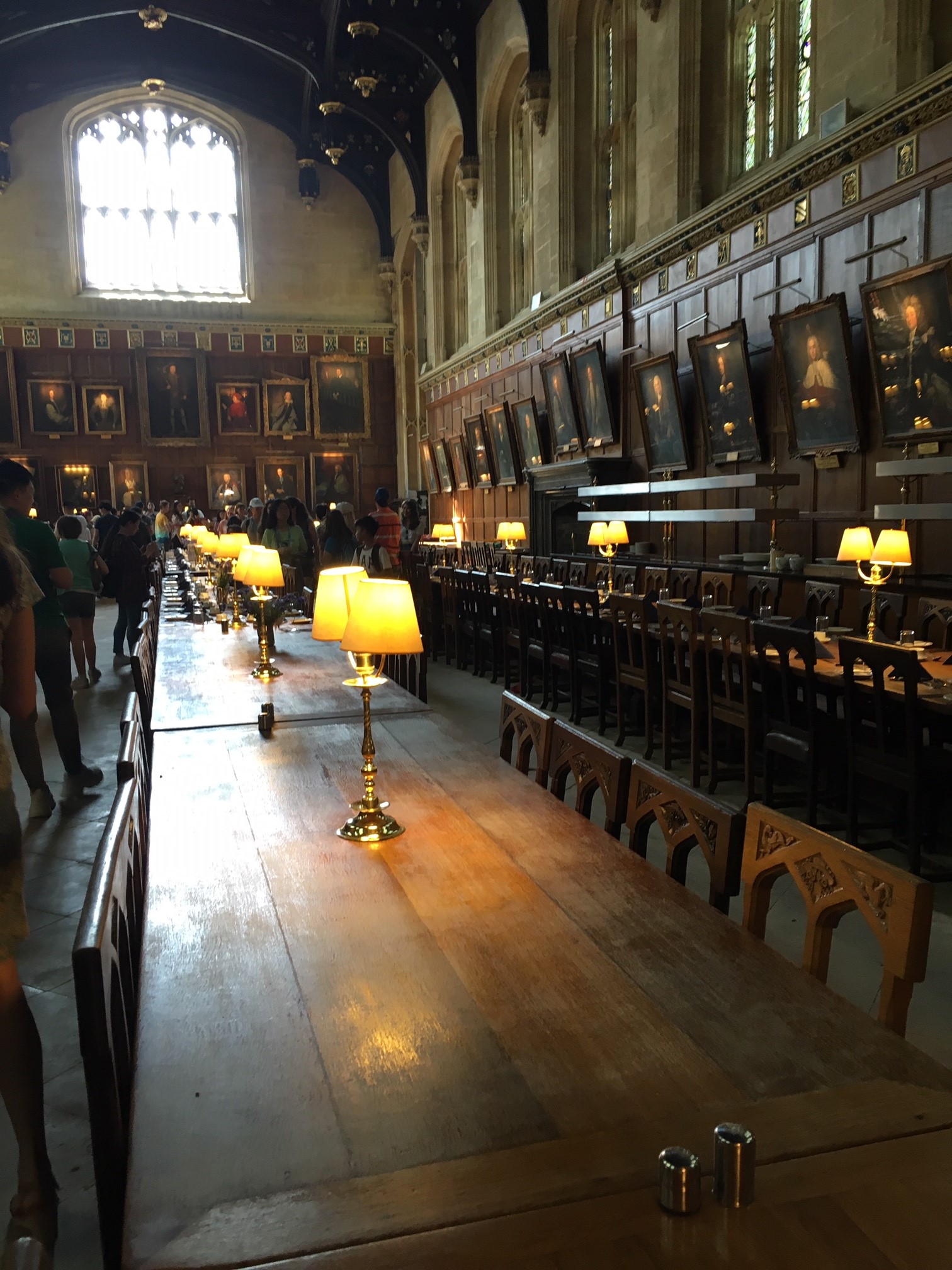
The Great Dining Hall. – Photo by May S. Ruiz / Beacon Media News
There are two dinner sittings: Informal Hall at 6:20 pm and Formal Hall at 7:20 pm and usually consist of a two- or three-course meal. During Formal Hall the academic community wears gowns, an undergraduate student says a Latin Grace at the lectern, and senior members dine at High Table. Wine, beer, and other drinks can be bought before dinner from the adjacent Buttery.
It is the largest pre-Victorian age college hall in either Oxford or Cambridge and seats as many as 300 people. Overhead is a magnificent hammerbeam ceiling and portraits of famous members, including a few of the 14 Prime Ministers educated at Christ Church, adorn the walls. Because Christ Church is a Royal Foundation, the reigning British Monarch acts as the representative of the Founder and is known as its ‘Visitor.’ A bust of her Majesty Queen Elizabeth II, as well as a portrait of the college’s founder King Henry VIII, can be seen behind the High Table.
As we passed back down the Hall Staircase, we came out onto the Tom Quad, originally called ‘the Great Quadrangle’ because of its grand scale. It is the largest in Oxford, measuring 79.5 x 80.5 meters. It was renamed ‘Tom Quad’ in the 17th century, after the six-ton bell ‘Great Tom’ was installed in Sir Christopher Wren’s new tower.
The Tom Quad – North Corner, the raised walkway around the Great Quadrangle, was meant to be roofed to form an enormous cloister as Cardinal Wolsey envisioned but was never completed. The arch shapes around the walls and protruding bases are all that remain. The new chapel Wolsey intended to build for his college along the north side of the quadrangle was never realized either. For 100 years the north side remained completely open with townspeople and cattle passing by on a muddy lane.
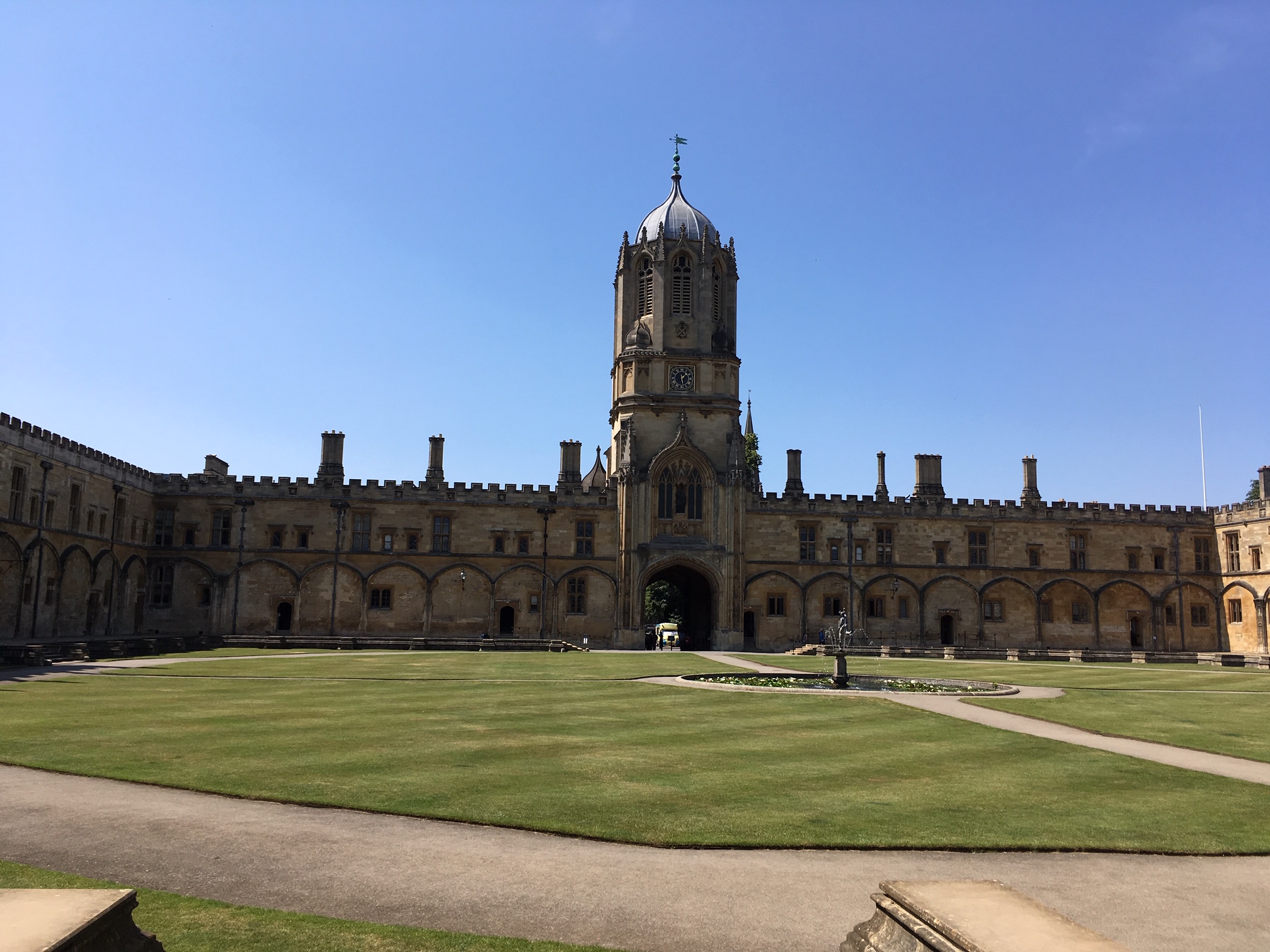
Tom Quad. – Photo by May S. Ruiz / Beacon Media News
In contrast to the Gothic splendor of Tom Quad lies the classical sophistication of Peckwater Quad. These elegant 18th century buildings lie on the site of a medieval inn, which was run by the Peckwater family. Undergraduate accommodation is available in the symmetrical structures occupying the three sides of the quad. On the fourth side is a stunning library.
With all the tourists moving about it was hard to remember that students live and study there. I can’t imagine how they can actually study, though, with so much activity and noise going on around them.
There is a Christ Church Picture Gallery, which apparently has one of the most noteworthy private collections of Old Master paintings and drawings in Great Britain. But, alas, we were pressed for time and we wanted to see other places so we skipped it.
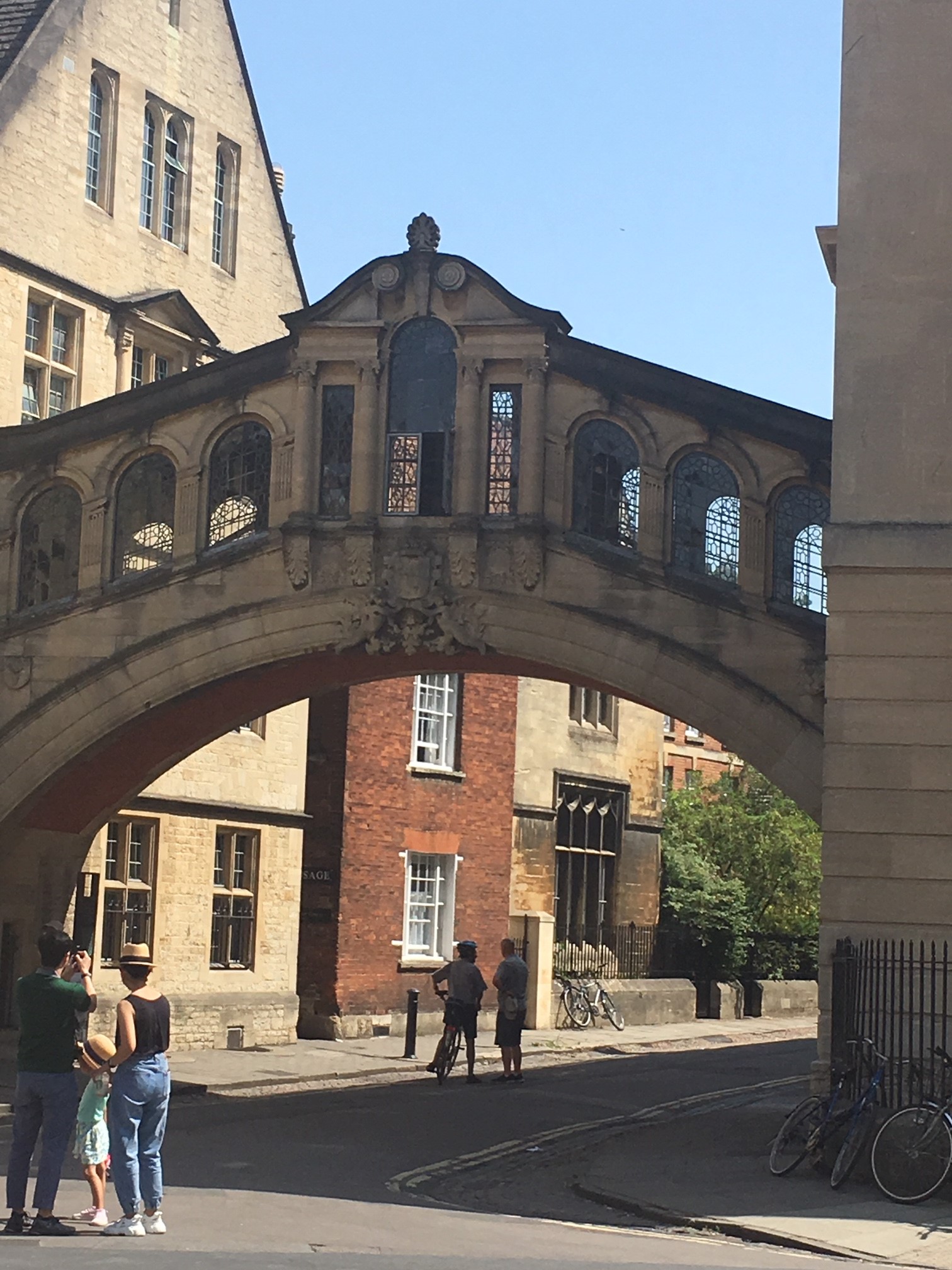
Oxford’s Bridge of Sighs. – Photo by May S. Ruiz / Beacon Media News
We walked by Hertford Bridge, a city landmark, which is a skyway that connects two parts of Hertford College over New College Lane. It is often referred to as the Bridge of Sighs although it resembles not the original Bridge of Sighs in Venice but the Rialto Bridge. (Interestingly, Cambridge also has its own Bridge of Sighs). In one scene in the Harry Potter films, Draco Malfoy says to Harry ‘You won’t last 10 seconds’ under a tree. That tree is inside the grounds of New College and it can be seen from the Bridge of Sighs when you look at a certain angle.
You can’t go to Oxford without going to the renowned Oxford University Press. Besides being the university’s official publisher of all research materials, books, and publications for its academics and students, it also prints more than 6,000 titles globally in a variety of formats. Its range covers English language teaching materials, children’s books, journals, scholarly monographs, printed music, higher education textbooks, and schoolbooks. Its most famous publication, as everyone knows, is the Oxford English Dictionary (or the OED, as it is commonly referred to), the definitive record of the English language.

Inside Oxford University Press. – Photo by May S. Ruiz / Beacon Media News
We lingered for hours to skim through some of their publications, to marvel at the 20-volumed OED, to buy some books and book bags and, I’m embarrassed to say, to escape the heat.
If you’ve ever been to the U.K. then you would know Tesco, their version of a Von’s or Ralph’s supermarket, except much smaller. I love their jute grocery bags and we stopped there the next day to buy a couple on our way to the Ashmolean Museum. The museum is named after Elias Ashmole, a celebrated antiquary, officer of arms, astrologer, and alchemist. He gifted his collection to the University of Oxford on the proviso that a suitable repository was constructed to house it. It opened its doors on the 21st of May 1683, making it Britain’s first public museum. Originally sited on Broad Street, it was relocated to its present location on Beaumont Street and completely redeveloped in 2009.
According to the Ashmolean souvenir book, it now ranks as one of the world’s great collections of art and archeology with an extraordinary range of objects from prehistory to the present day spanning Antiquities, Western and Eastern art, Coins and Casts. And that assertion is not an exaggeration. Visitors to the museum will be treated to a staggering amount of treasures and wealth found within.
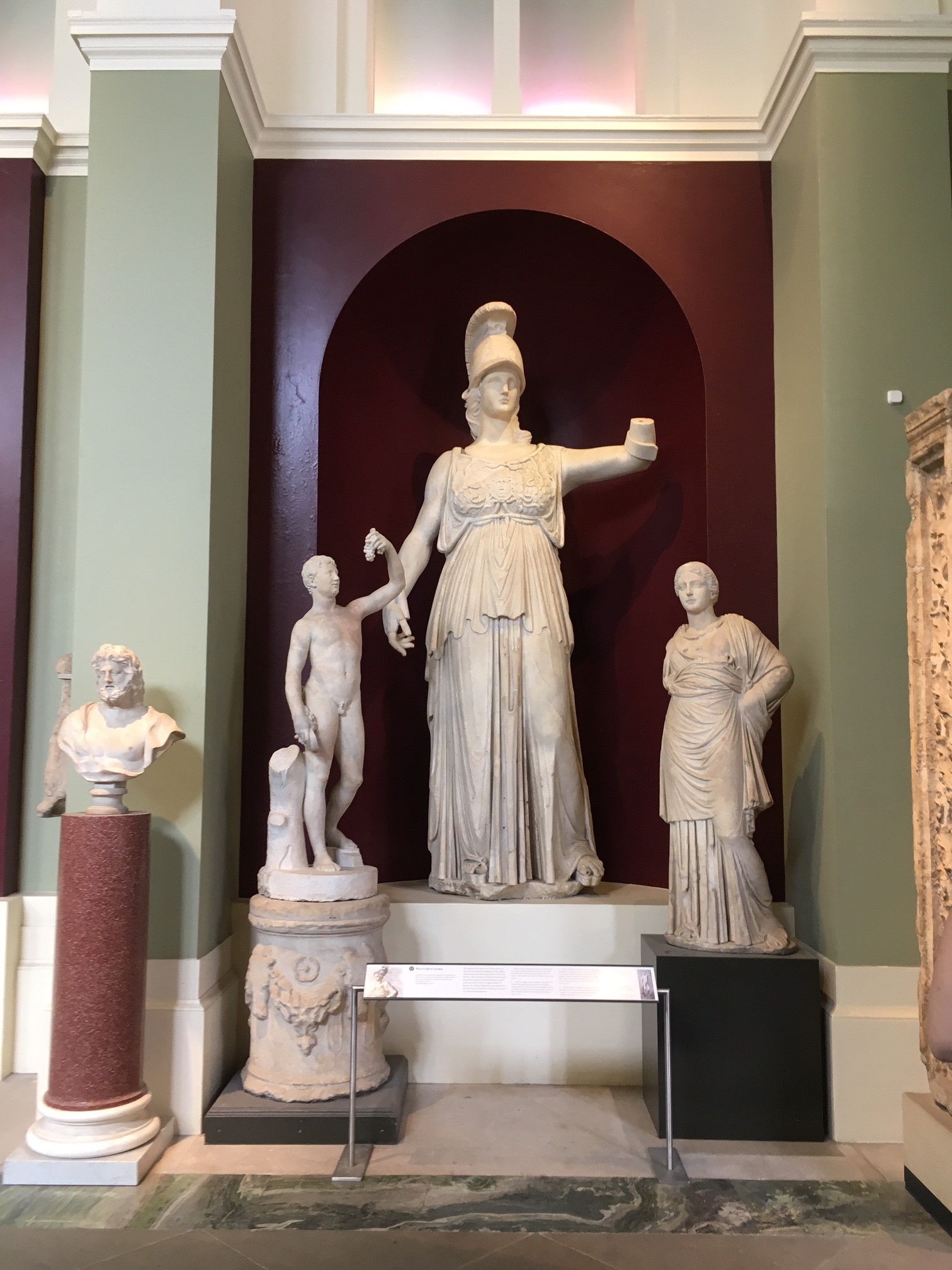
Roman statues at the Ashmolean’s Level 1. – Photo by May S. Ruiz / Beacon Media News
On level 1, which explores the past, we beheld displays on Eastern art paintings, India from AD 600, Islamic Middle East, Medieval Cyprus, the Mediterranean world, and Mughal India. Level G is all about the ancient world – the Aegean, ancient Cyprus, ancient Egypt and Sudan, ancient Near East, the cast gallery, China to AD 800, Chinese paintings, European prehistory, Greek and Roman sculpture, India to AD 600, and Italy before Rome.
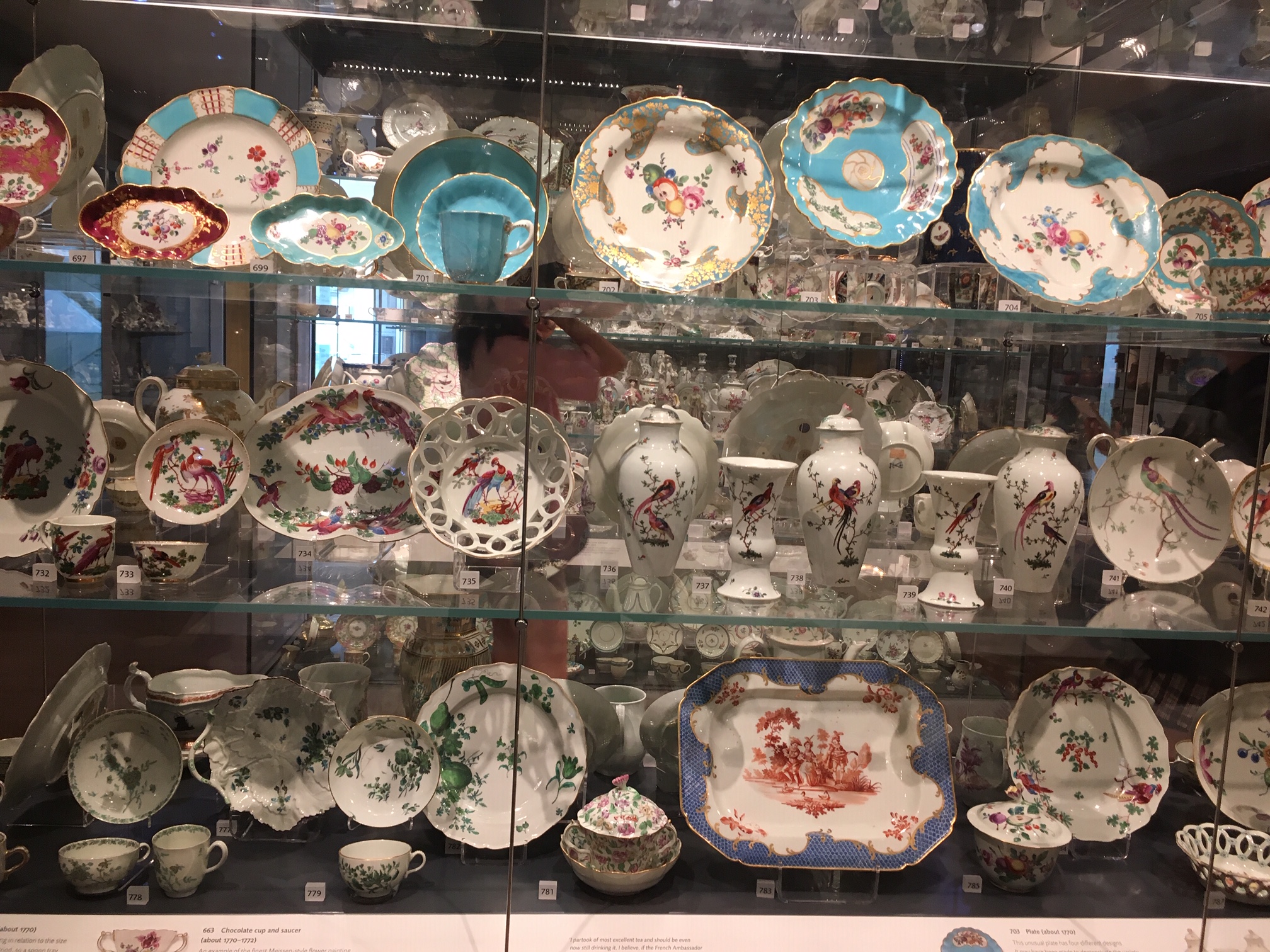
Level 2 has European ceramics. – Photo by May S. Ruiz / Beacon Media News
Level 2 is where West Meets East – there are 18th century art, arts of the Renaissance, Baroque art, Britain and Italy, China from AD 800, Dutch and Flemish art, early Italian art, England from 400-1600, European art and ceramics, Japan from 1600-1850, music and tapestry, oil sketches, and still-life paintings.
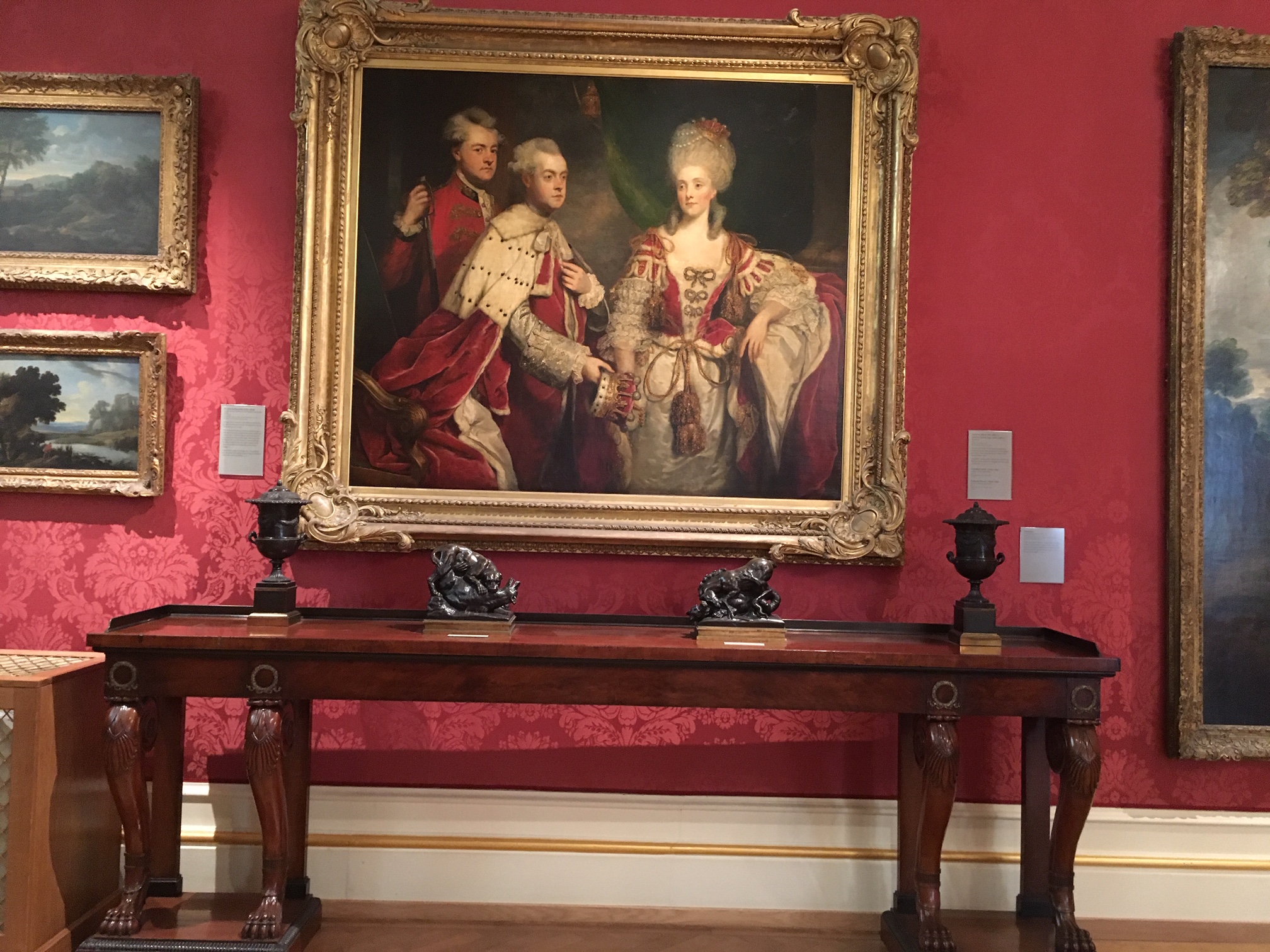
Level 3’s 19th century art. – Photo by May S. Ruiz / Beacon Media News
Special exhibitions are held on level 3 but it’s not usually open to the public so we went to level 3M which is dedicated to European art from 1800 to the present day –19th century art, De Morgan ceramics, modern art, Pissarro, pre-Raphaelites, Sickert and his contemporaries.
We spent several hours there and I can’t say that I was able to take it all in. The sheer number of floors to climb, galleries to enter, display cases to peer into, and captions to read, were mind-boggling. It was also laid out rather weirdly – with some collections which seemed to be misplaced. Additionally, there were so many twists and turns in the museum that it was easy for people to get lost.
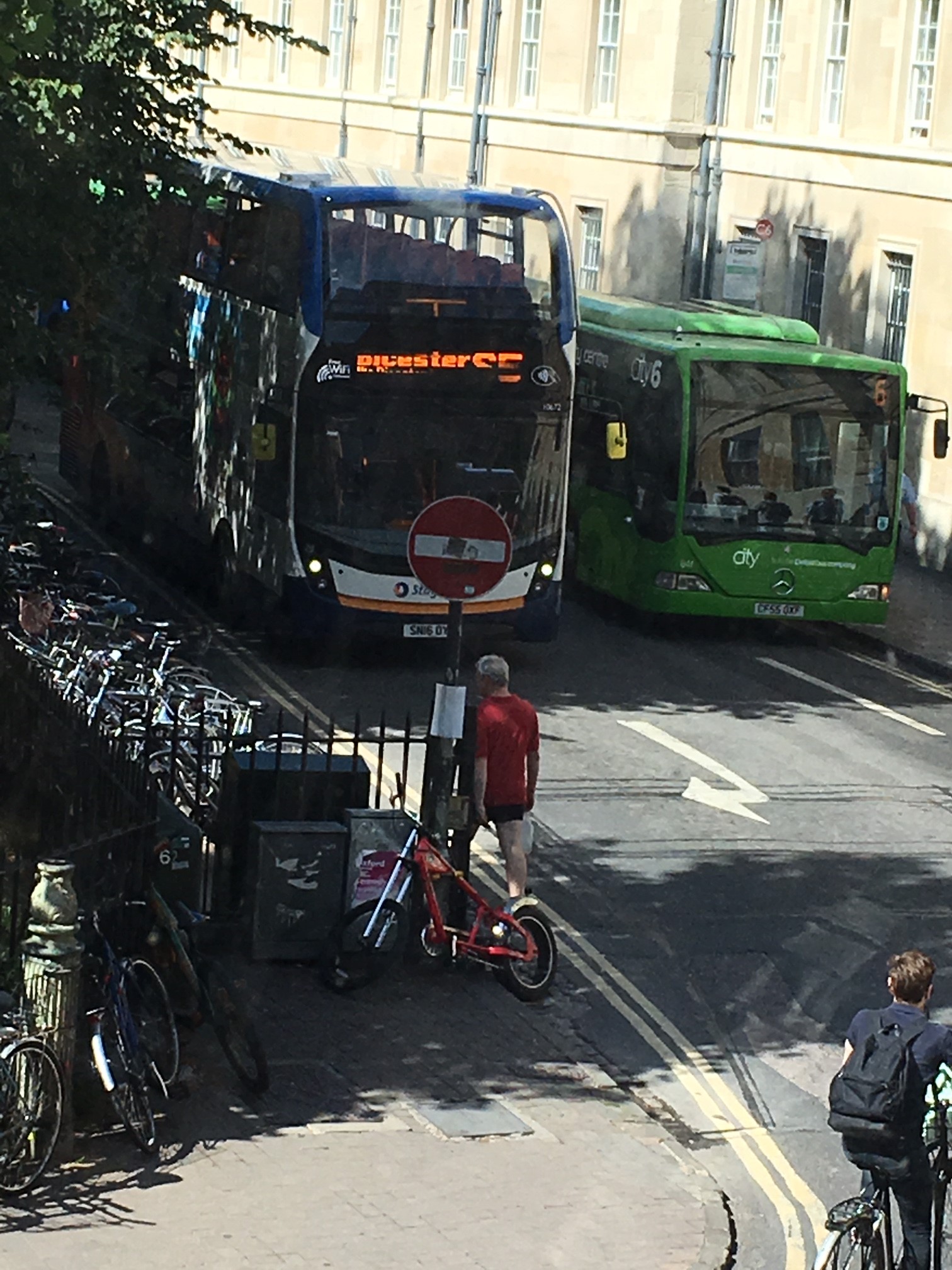
Looking down onto the street from a Waterstones window seat. – Photo by May S. Ruiz / Beacon Media News
From the Ashmolean we headed to Waterstones Oxford where it’s called ‘The Bookshop on the Corner’ because it’s inside William Baker House, located on the corner of Cornmarket Street and The Broad. After all the walking we did at the museum, it was a relief to sit down and read in one of the nooks. I found a great window seat on the third floor, from where I watched all the people and traffic below.
The following day was our last full day in Oxford and we squeezed in several sights. First on our list was the Bodleian Library at Old Schools Quad on Broad Street. The world’s largest academic library, it has six million books and one million maps. We met our tour guide at the Divinity School, which is attached to the Bodleian Library. It is a medieval building and room, the oldest surviving structure, and is used for oral exams and discussions on religion. It served as the infirmary in four Harry Potter films, and as the ballroom where Professor McGonagall taught students how to dance in ‘The Goblet of Fire.’
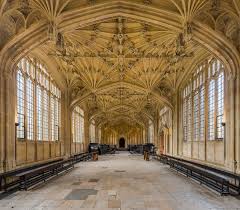
Divinity School. – Courtesy photo
Our guide told us to store our handbags and all or belongings in a locked storage place. We were given earphones so we could hear her because, she reminded us, it is a working library and she had to speak at barely above a whisper. It was such a pity that taking photos was strictly prohibited (any device which could take pictures were kept under lock and key); it would have been such a thrill to have photos of places we recognize from watching Harry Potter movies. In fact, she carried a binder that contained laminated photos of the scenes from the films which she showed us.
She then took us to the Duke Humfreys Library, located above Divinity School. The oldest reading room in the Bodleian, it is divided into the original medieval section, the Arts End, and the Selden End, containing maps, music, and pre-1641 rare books. The books in the oldest part are housed in oak bookcases at right angles to the walls on either side. The ceilings are fitted with panels painted with the arms of the university.
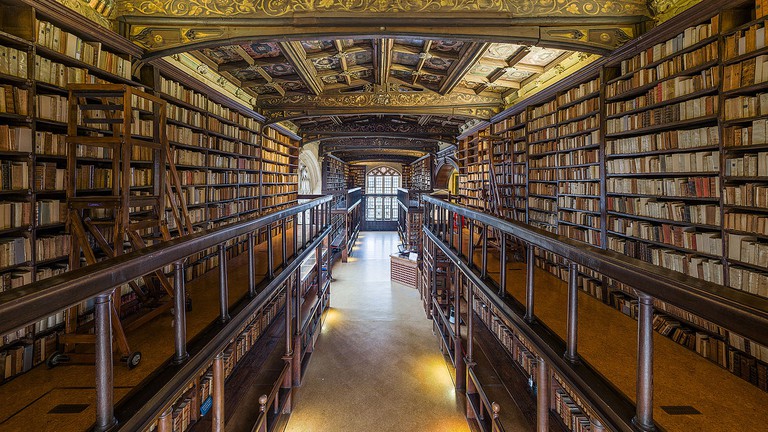
Duke Humfreys Library. – Courtesy photo
It was named after Humphrey of Lancaster, first Duke of Gloucester, a younger son of Henry IV. A connoisseur of literature, he commissioned the translation of classical works from Greek into Latin. He bequeathed his collection of 281 books to the University of Oxford upon his death in 1447, a generous donation since the university had merely 20 books (!) at the time. Only three of his original books remain in the library today.
The Humferys Library was used as the Hogwarts Library in the Harry Potter films. In ‘The Sorcerer’s Stone,’ Harry, wearing his invisibility cloak, steals into the restricted section at night to look for information about the alchemist Nicolas Flamel.
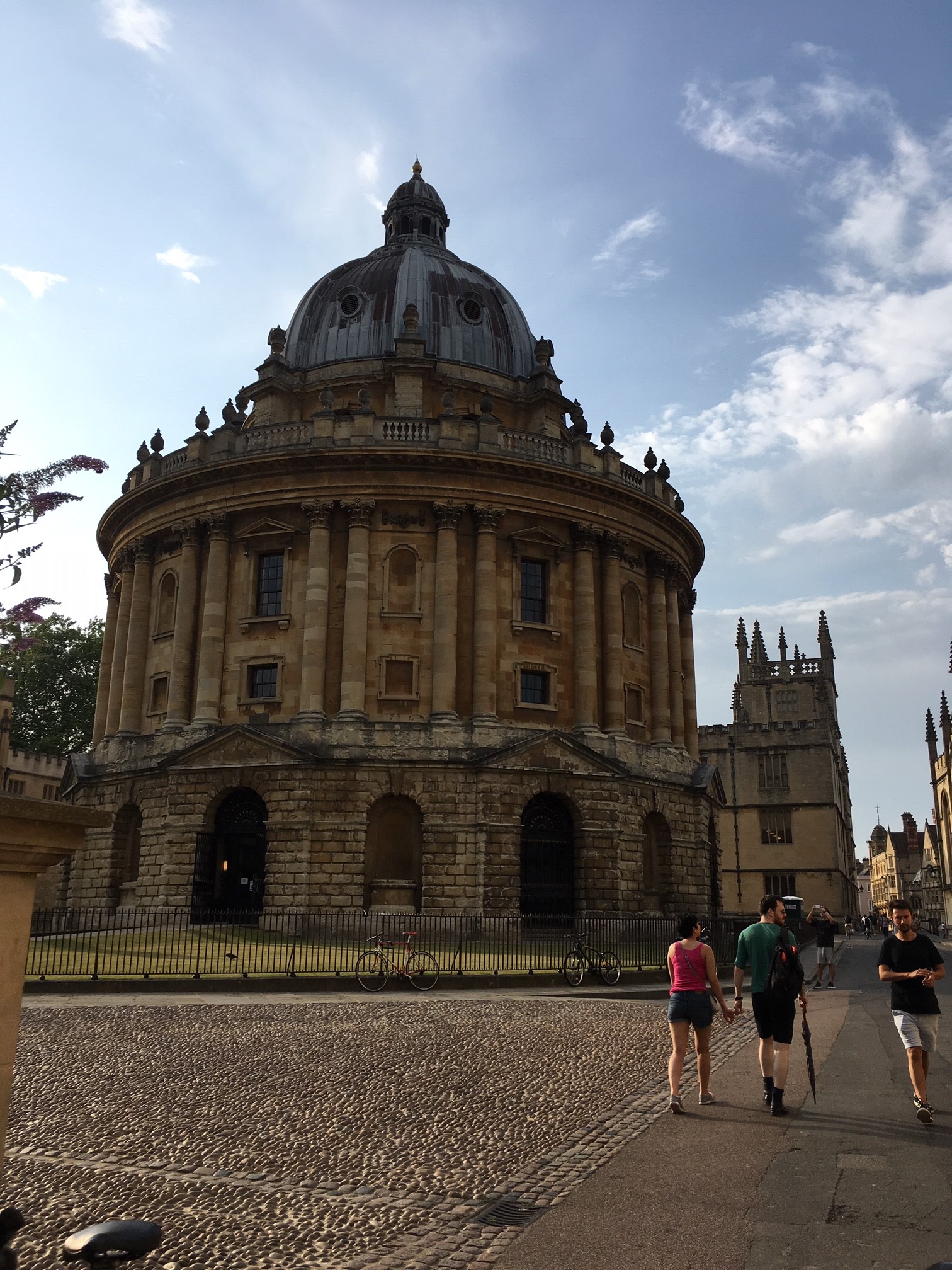
The Radcliffe Camera. – Photo by May S. Ruiz / Beacon Media News
After our guided tour of the Bodleian, we walked to the Radcliffe Camera (Camera means ‘room’ in Latin), also known as ‘Rad Cam’ or ‘The Camera.’ It is a stunning structure designed by James Gibbs in neo-classical style built in 1749 to hold the Radcliffe Science Library. It was named after Dr John Radcliffe who donated the funds to build it and is now the principal reading room of the Bodleian.
We stopped in at Weston Library across the street which houses a large collection of rare and antiquarian books. It also has a souvenir shop where one can purchase Bodleian and Radcliffe Camera mementos.
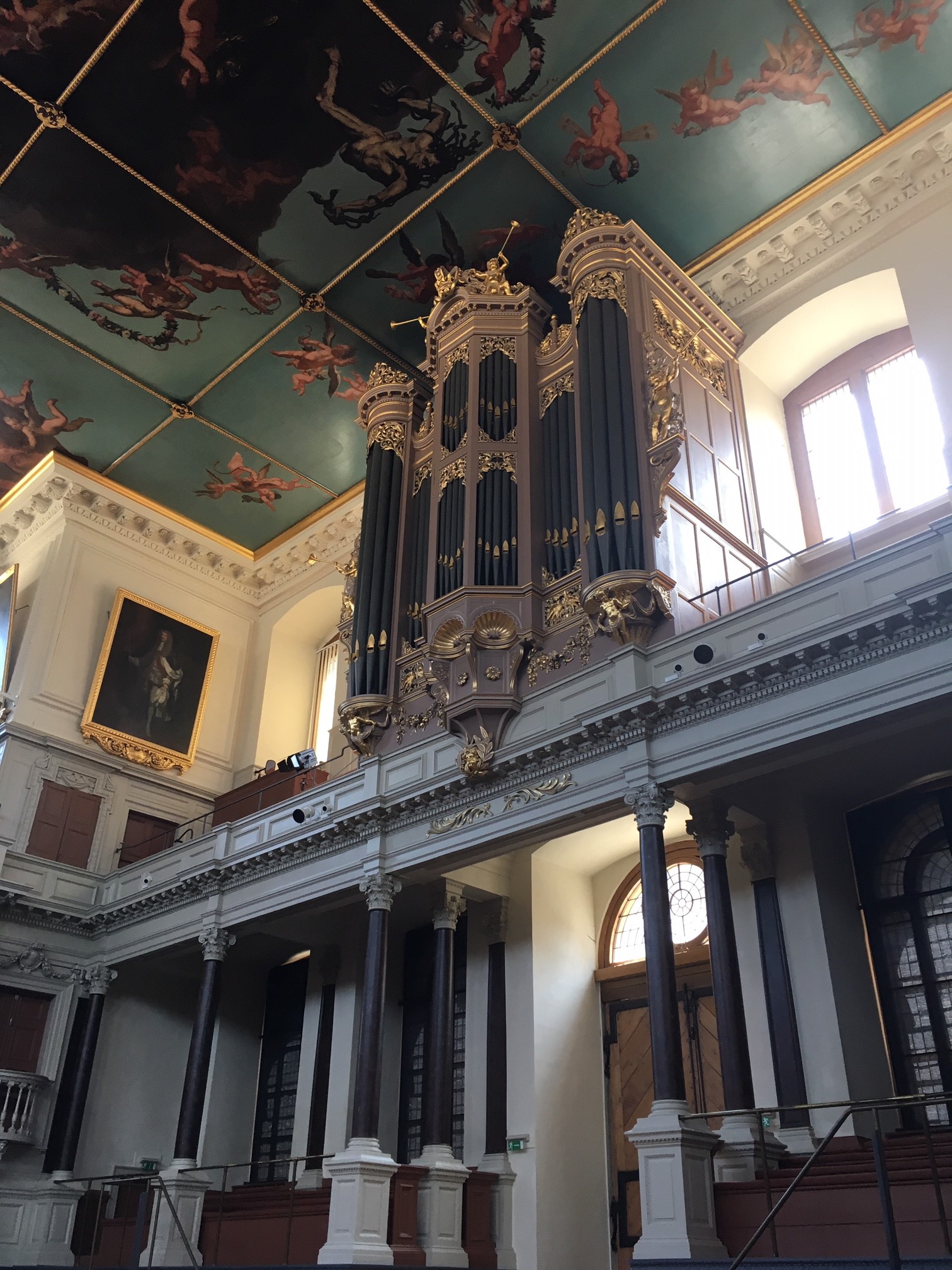
Inside the Sheldonian Theatre. – Photo by Brianna Chu / Beacon Media News
The Sheldonian Theatre was our next destination. Designed by Sir Christopher Wren, it was erected between 1664 and 1669, and has been described as one of the architectural jewels of Oxford. It is the ceremonial hall of the University of Oxford where graduations are held and is the venue for other university activities like lectures and concerts. Its most interesting feature is the eight-sided cupola in the center of the roof which has large windows on all sides that provide breathtaking views across central Oxford.
We then walked to the Oxford Covered Market, which reminded me of the Grand Central Market in Downtown L.A. It is where one can find over 50 independent traders selling gift items, clothing and shoes, fashion accessories, fresh flowers, prepared food, various beverages, and fresh produce and meat.
However, we didn’t find anything we wanted to eat or buy so we strolled to the shopping mall and went inside M & S. I hadn’t been to a Marks & Spencer store in almost three decades and thought it would be fun to see if I still remembered what it looked like. Nothing much had changed since except for the prices, which, understandably have gone higher. We had afternoon tea with Victoria sponge cake.
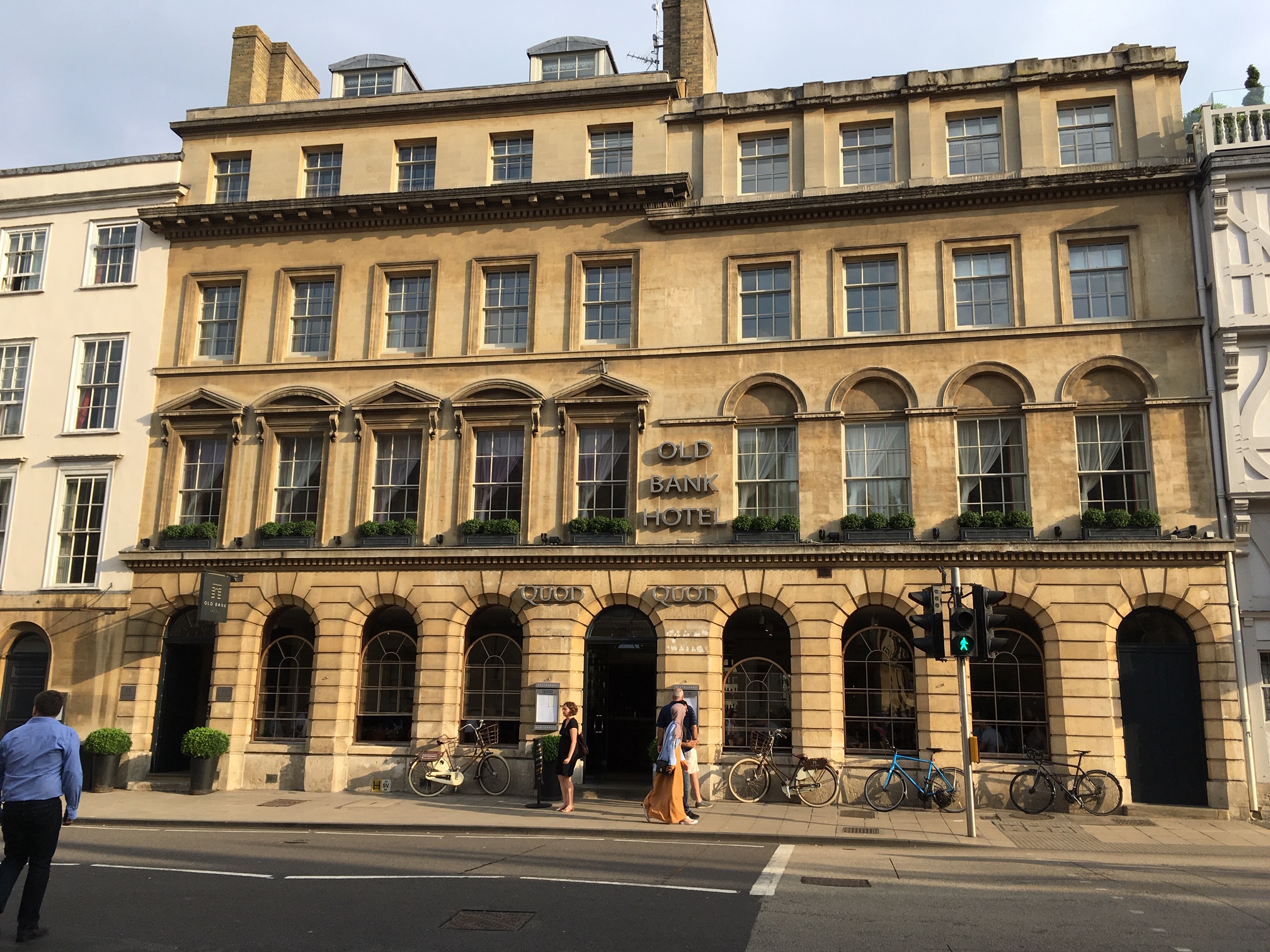
The Old Bank Hotel. – Photo by May S. Ruiz / Beacon Media News
For our last evening in town we had dinner at Quod Restaurant and Bar at the Old Bank Hotel on Oxford’s famous High. Formerly a banking hall which was transformed by owner Jeremy Mogford, it boasts a show-stopping onyx bar and a stylish terrace. The delicious food and impeccable service at the Quod are matched only by the impressive and eclectic collection of modern art by young British artists such as Sandra Blow, Craigie Aitchinson, and Damien Hirst that hang on the walls.
It had been a lovely, albeit short, trip to Oxford. And while our visit was marked by extreme heat, it didn’t detract from our enjoyment. It’s a bustling city filled with tourists but when you get inside the colleges, there is that rarefied air you’d expect from an institution as revered as it is. I don’t know that it can ever be replicated. There is, after all, only one university called Oxford.







































































































